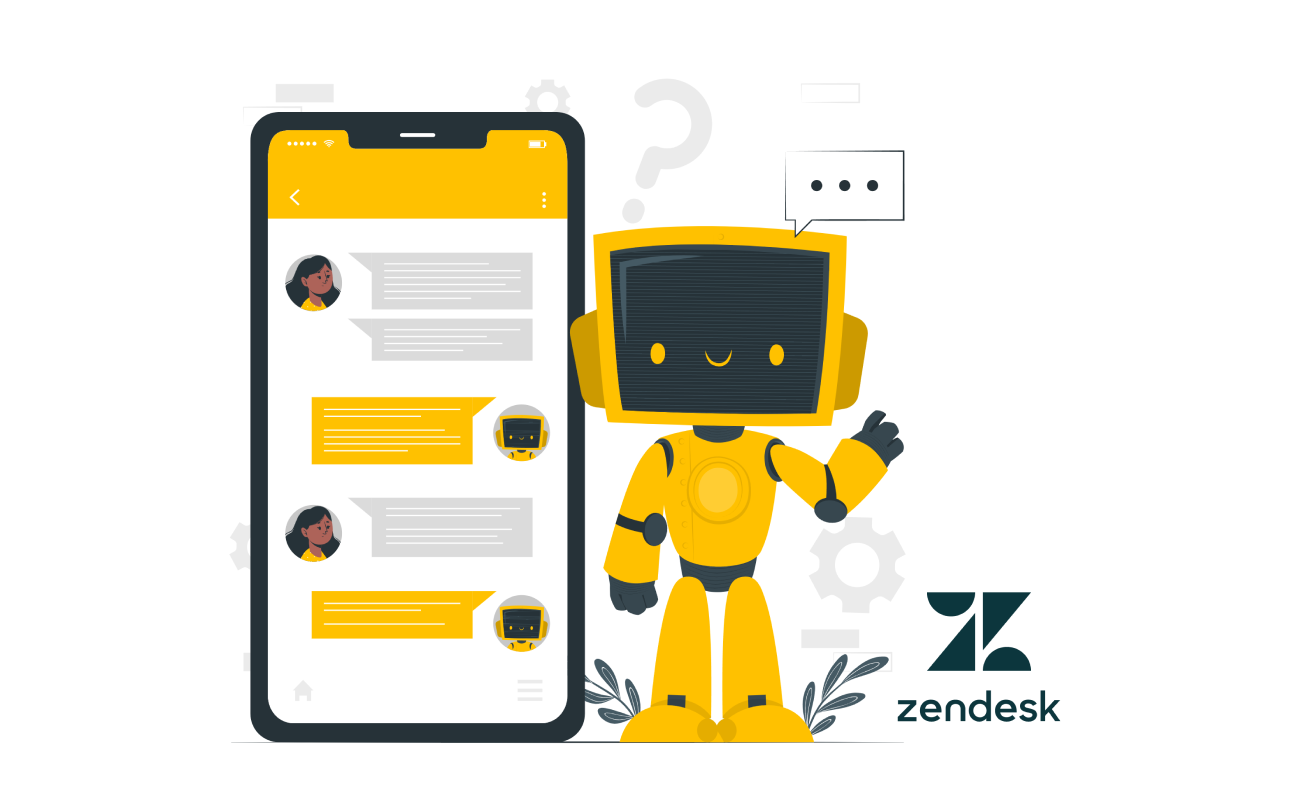Did you know that 90% of customers rate an "immediate" response as essential or very important when they have a customer service question? Even more striking, 60% define "immediate" as 10 minutes or less. - HubSpot Research
When ticket resolution drags, customer satisfaction drops, and so does your business's reputation. Frustrated customers are likely to leave and not come back. But here's the good news: with the right tactics, you can solve tickets in Zendesk faster and keep those smiles on your customers' faces.
1. Master the Art of Macros
Imagine typing out the same response 10 times a day. Macros are your escape from this repetitive nightmare. They store your most common replies, ready to be deployed with a single keystroke.
For example, let's say you often get questions about order tracking. Create a macro that says:
Hi {{ticket.requester.name}},
I'm glad you reached out!
You can easily track your order using this link: [Tracking Link].
If you run into any issues or have further questions, just let me know—I'm here to help!
The key to using macros effectively is customization. Make them sound personal. Instead of a cold, robotic reply, add a touch of warmth. Use the customer's name and tweak the language to fit your brand's voice. This way, you save time and still provide a great customer experience.
2. Customize Your Dashboard with Personal Views
Personal views in Zendesk let you organize your tickets based on specific criteria. This makes it easier to manage your workload and focus on what's important.
For example, you can create a personal view to manage high-priority tickets. Go to your Zendesk Admin Center, find "Views," and then click "Add View." Set the criteria to show only high-priority tickets. Name this view something like "High Priority Tickets." Now, you have a dedicated space to see and address urgent issues quickly.
Another useful personal view is one that shows tickets assigned to you. Create a view with the criteria set to display only tickets where you are the assignee. Name it "My Tickets" or something similar. This view helps you keep track of tickets you're directly responsible for, ensuring you stay on top of your tasks and close tickets promptly.
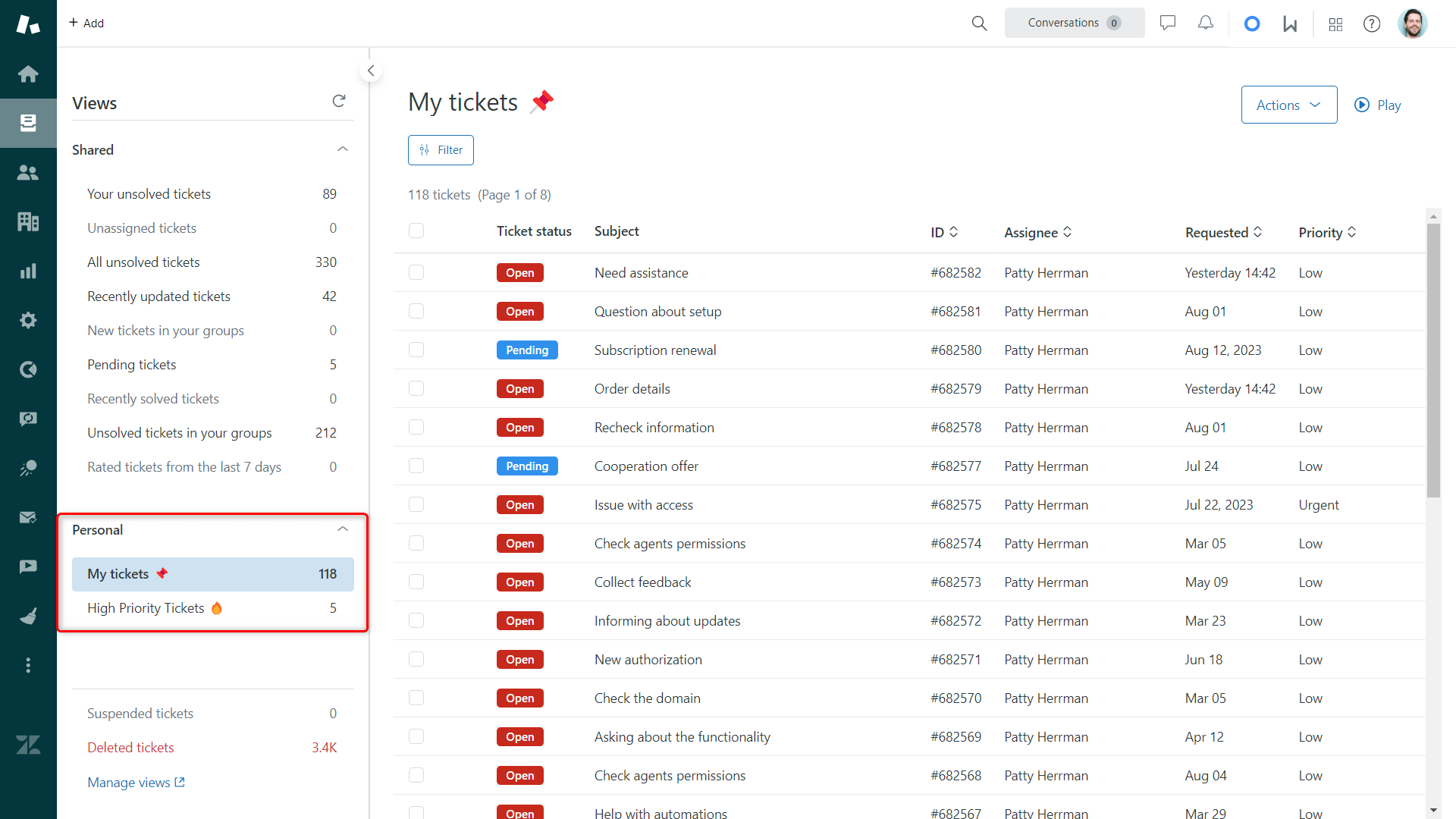
Regular updates to your personal views are crucial. Priorities can change, so make sure your views reflect what's most important at any given time. This keeps your workflow efficient and ensures that nothing slips through the cracks.
3. Streamline with Tags and Custom Fields
Categorizing tickets with Zendesk tags and custom fields is a must for faster processing. Tags help you quickly identify and sort tickets based on specific keywords, while custom fields allow you to add detailed information relevant to your needs.
Speaking of fields, UpChat for Zendesk can enhance your workflow by seamlessly connecting Zendesk Chat and Support. It helps update your custom fields in both instances at a time. When a chat is converted into a ticket, UpChat ensures all relevant information is captured and categorized, saving you the hassle of manual updates.
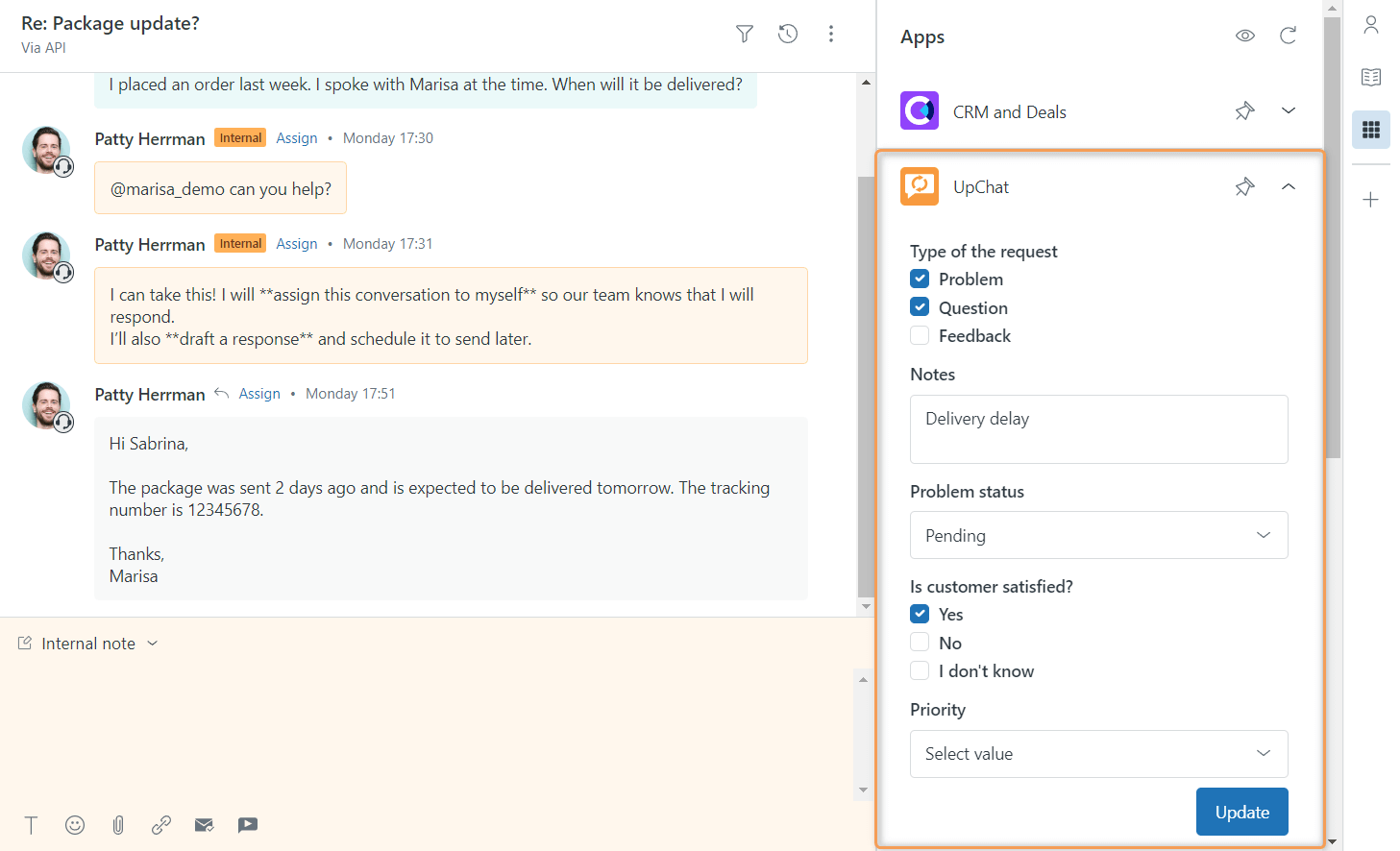
Consistency is key when using tags and custom fields. Establish clear tagging conventions that everyone on your team follows. This streamlines ticket management and ensures that agents can easily find and address issues without confusion.
4. Boost Efficiency with Detailed Internal Notes
Provide context and share insights among your team members with the help of internal notes. They ensure everyone is on the same page and can pick up a ticket without missing a beat.
To add an internal note in Zendesk, open a ticket and switch to the "Internal Note" tab. Type your note, making sure to include all relevant details, such as customer history, troubleshooting steps taken, and any insights that might help the next agent. Organize your notes with bullet points or numbered lists for clarity.
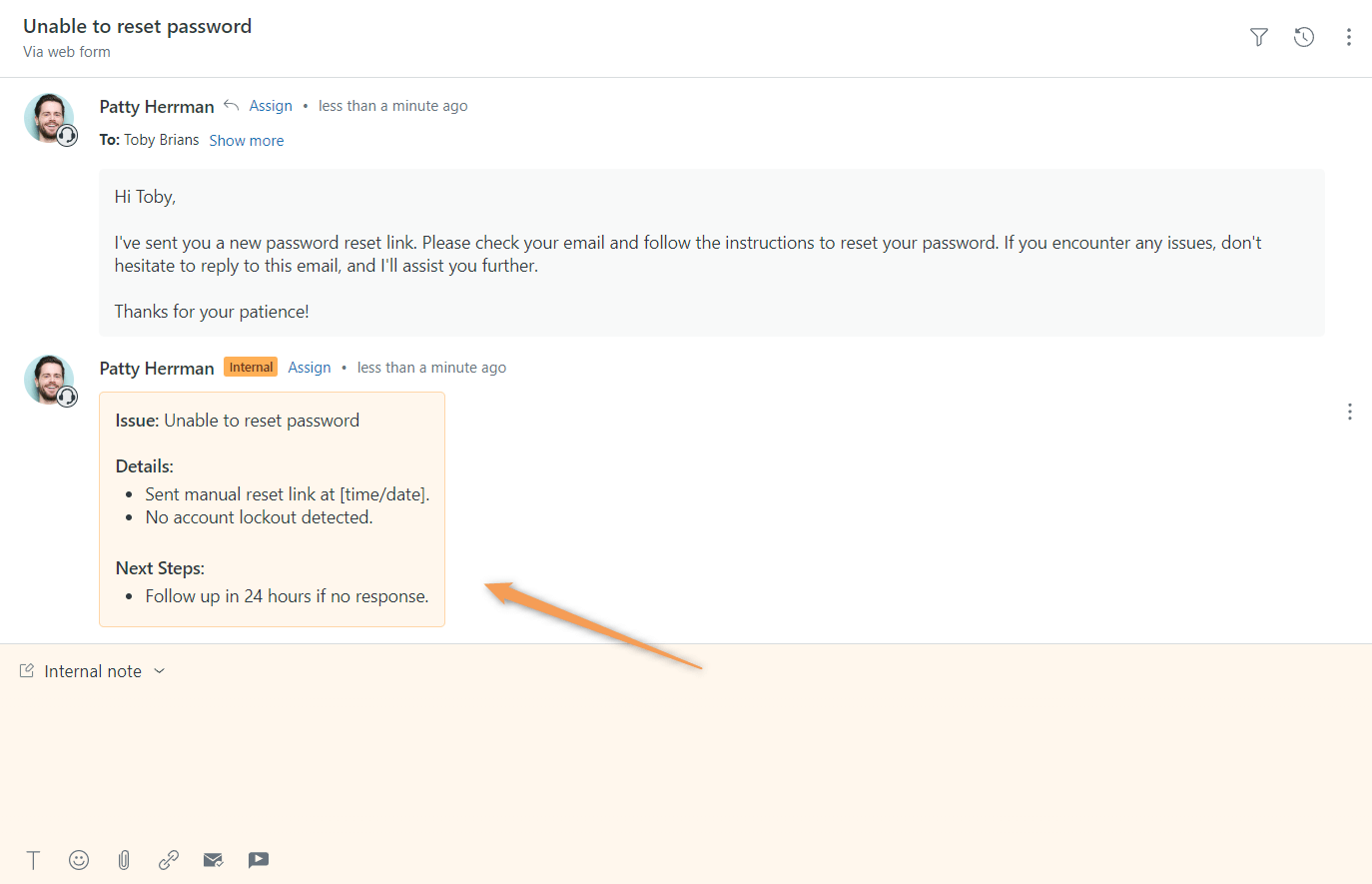
In cases where you need to update multiple tickets with the same internal note, Proactive Campaigns can be a time-saver. This Zendesk app allows you to send bulk updates to tickets, including internal notes, without manually editing each one. This is especially useful for managing ticket changes or providing consistent updates across a large number of cases.
Encourage agents to be clear and concise in their notes. This maximizes efficiency and makes it easier for others to quickly understand the ticket's status. Clear internal notes can drastically reduce response times and improve overall team collaboration.
5. Create a Rich Knowledge Base
A well-maintained knowledge base is a powerful tool for empowering agents to find solutions quickly. In Zendesk, this resource is conveniently available right within the ticket itself, providing agents with immediate access to information without needing to switch tabs or search externally.
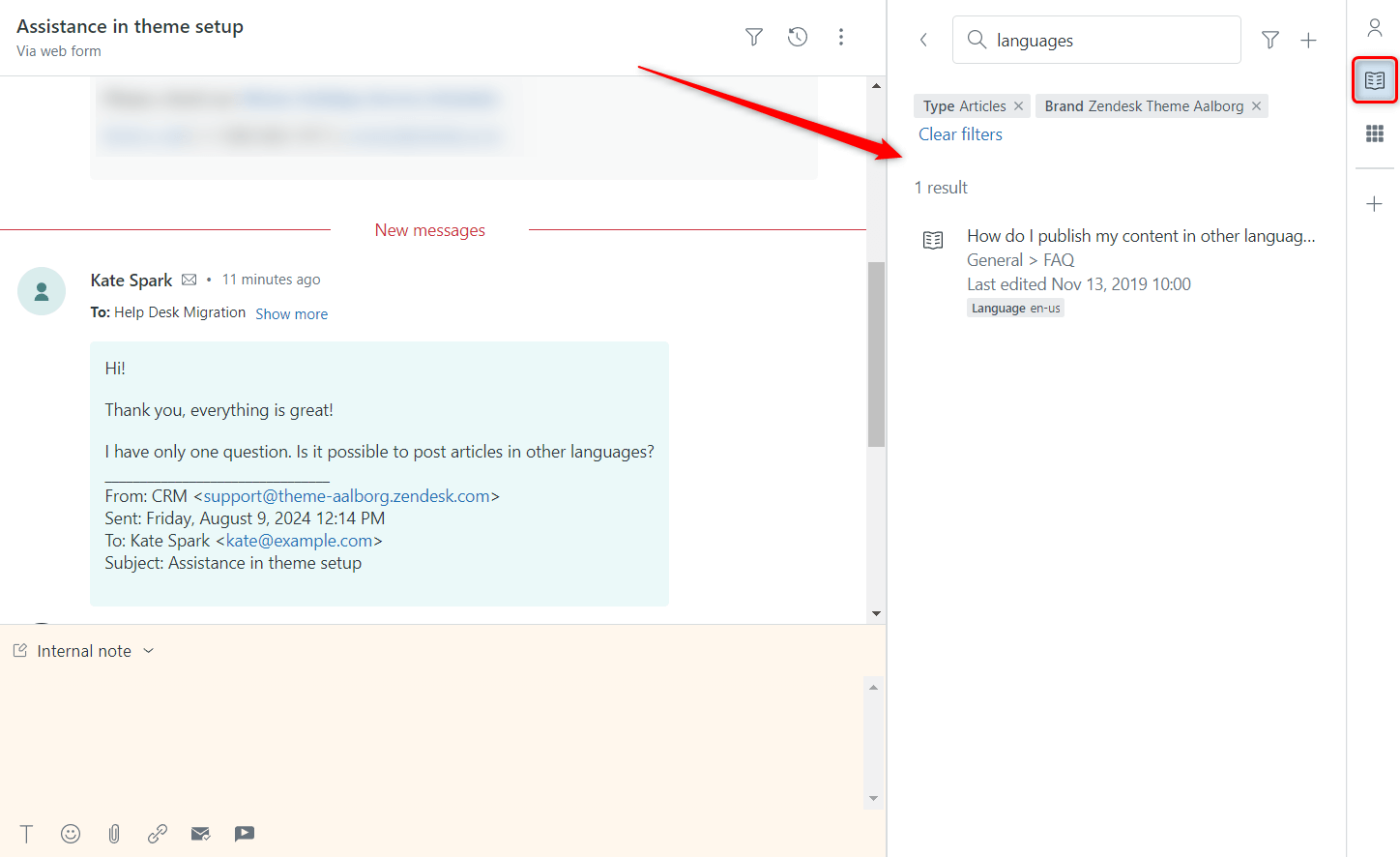
For example, when dealing with a customer query, an agent can use internal notes to reference specific articles within the knowledge base. Instead of searching for information from scratch, they can quickly find and link relevant articles directly in their responses.
In addition to Zendesk's built-in knowledge base, creating and maintaining your own help center can be incredibly valuable. A business-specific help center allows you to tailor content to address your unique products, services, and common customer issues. These custom resources can boost self-service and reduce the volume of repetitive queries that agents need to handle.
To make the most of your knowledge base, keep it updated and easy to navigate. Review and add new content regularly to cover emerging issues and trends. Organize articles logically, use clear headings, and include a robust search function to help agents find what they need swiftly.
6. Resolve Issues Faster with Video Replies
Unlike text, videos allow you to show rather than tell, making it easier for customers to understand solutions. This visual approach can significantly reduce back-and-forth communication, saving both time and effort.
The Video Reply app for Zendesk makes it simple to incorporate video communication into your support process. This app lets you record and send personalized video messages directly from a ticket. Whether demonstrating a product feature, walking through a troubleshooting process, or providing detailed instructions, video replies add a personal touch and clarity that text alone can't achieve.
For example, if a customer is struggling with a technical setup, you can send a quick video showing the exact steps they need to follow. This helps speed up resolution times and enhance the customer experience by making interactions more engaging and effective.
Using video replies is especially useful for troubleshooting and personalized customer interactions. It helps to convey empathy and understanding, as customers can see and hear the agent, which builds a stronger connection.
7. Prioritize Like a Pro with SLAs
Service Level Agreements (SLAs) are essential for effectively managing ticket prioritization. SLAs define the maximum time allowed to respond to and resolve customer inquiries, ensuring that urgent issues are handled promptly and efficiently.
To set up SLAs in Zendesk, go to the Admin settings and select "Business Rules." From there, you can create SLA policies that specify response and resolution times based on ticket priority.
For example, you might set a 1-hour response time for high-priority tickets and a 24-hour resolution time for lower-priority ones. Once configured, Zendesk will automatically track these times and alert you if a ticket is approaching its SLA deadline.

Effective communication with customers about expected response times is crucial. Clearly outline your SLAs in your customer support documentation and during initial interactions. Let customers know when they can expect a reply and resolution. This transparency helps manage expectations and builds trust.
Extra Tips
1. Explore Zendesk Marketplace. There, you can find numerous apps and integrations to enhance your support operations. From automation tools to reporting enhancements, there are plenty of options to help you work smarter, not harder.
2. Master Time Management. Use tools like calendar reminders and task lists to prioritize your workload. Allocate specific times for checking and responding to tickets, and stick to those schedules to avoid getting overwhelmed. Breaking down tasks into manageable chunks can make a big difference in your productivity.
3. Commit to Continuous Learning and Improvement. The world of customer support is always evolving, and staying updated with the latest trends and tools is essential. Regularly attend webinars, read industry blogs, and participate in training sessions to keep your skills sharp. Share knowledge and best practices to encourage a culture of continuous improvement within your team.
Conclusion
All the abovementioned strategies are designed to help you tackle and solve Zendesk tickets more efficiently, ultimately improving your overall support process. Incorporate them into your daily routine to make all the difference, enhance productivity, reduce response times, and provide a better experience for your customers.
We encourage you to put these techniques into action and see how they work for you.

Want to boost your productivity?
We offer a number of Zendesk apps for your team
Explore our products



